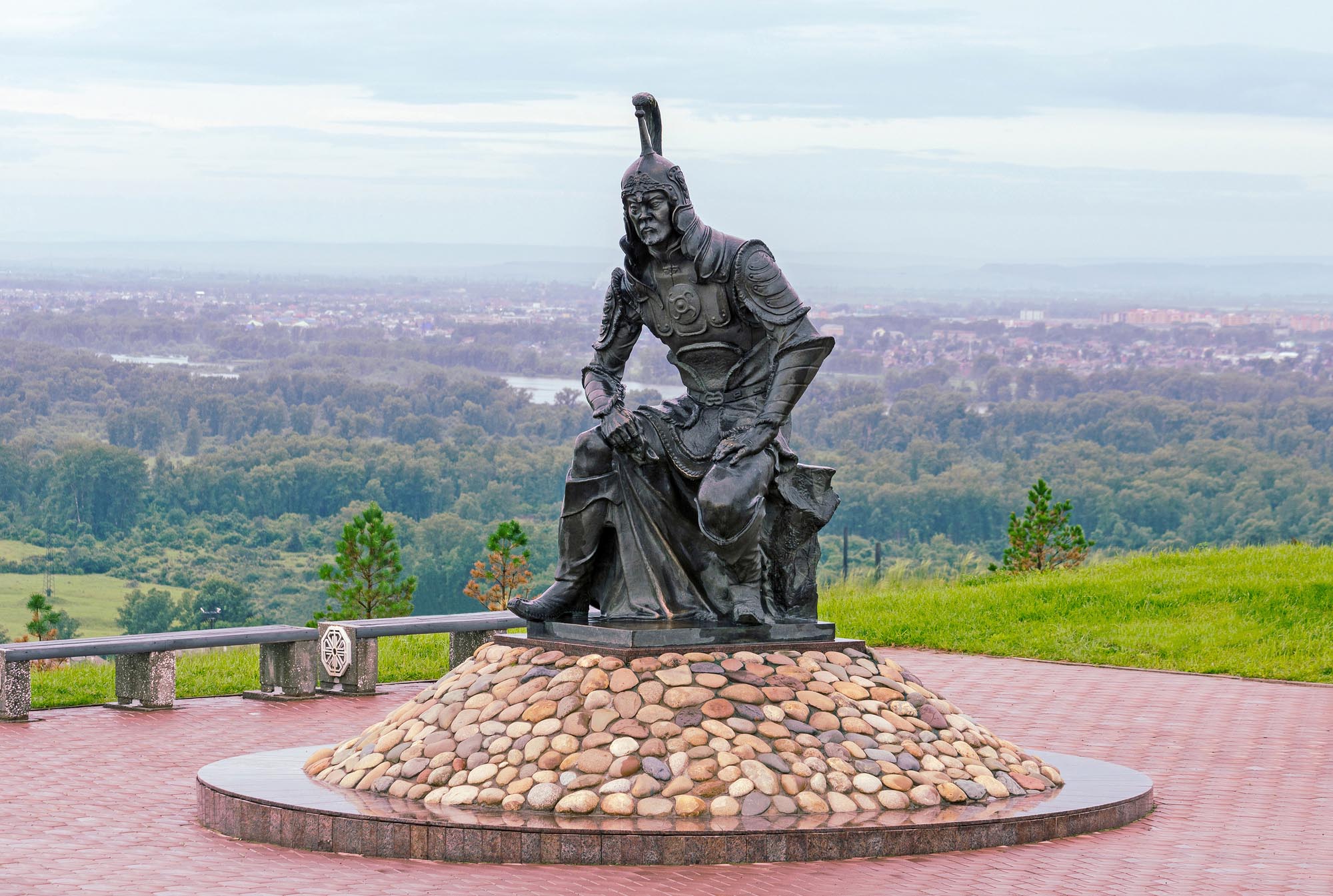
Ust-Abakanskoye village (since 1931 city of Abakan) was funded in 1780s. Since 1822 when special government system for non-Russian (“allogeneous”) peoples was fixed in Russian Empire Ust-Abakanskoye became a residence of Khakassian people local authorities. Now Abakan is the capital of the Republic of Khakassia included into the Russian Federation. The city tour enables you to see the most interesting places of Abakan. Amomg them you will visit the Gardens of Dream park of landscape design where you can see the Eiffel Tower, sinister claws and beak of a huge eagle, inconspicuous grassy hummocks which are actually amusing hedgehog, English lawn, numerous Siberian and overseas plants, cozy arbours, swings, merry little creatures sitting on the edges of paths and a lot of other interesting and funny things.
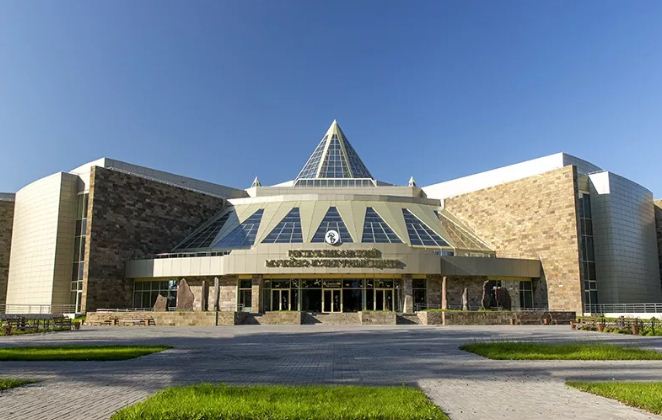
In the Regional Museum of Khakassia in Abakan you will acquaint with the Khakassian people history and mode of life. The pride of the museum collection are petroglyphs and stone sculptures (famous Yenisei Idols). Among them there are fantastic animals, sun like gods, figures with animal’s heads. Local people believe that some of these stones still have great power. You will also acquaint with interesting ethnographic collection including household and clothing items and jewelry of indigenous inhabitants and Russian population. You will see the original Khakass yurta (ger), original costume of Khakass shaman and other shaman attributes.
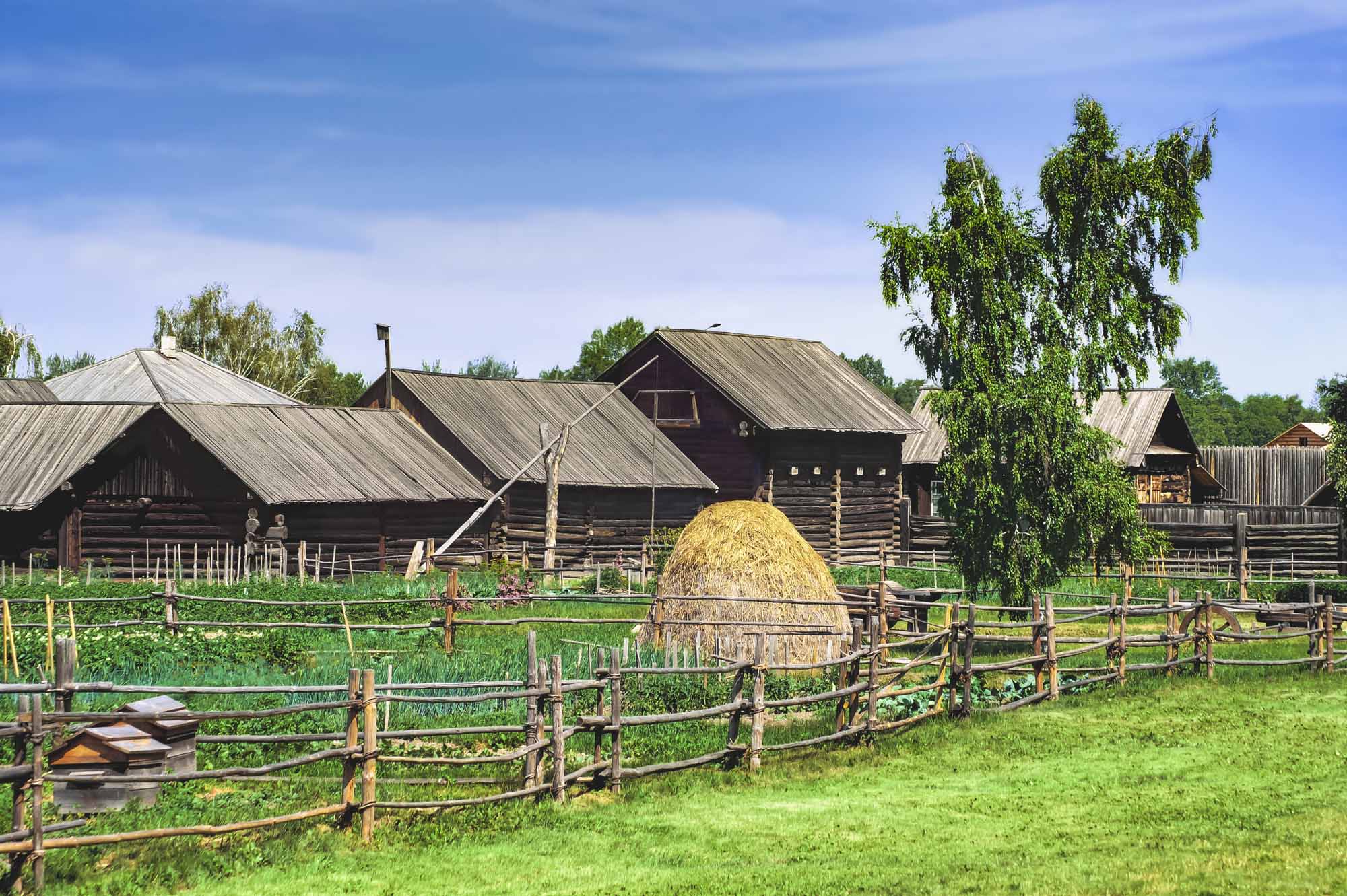
The Shushenskoye Ethnographic Museum (80 km from Abakan) presents the customs and traditions of the Siberian village of the late XIX c. with its streets and houses. Shushenskoye is also known as place where founder of the Communist Party and the first hear of Soviet government Vladimir Lenin was exiled in 1897-1900. This corner of antiquity is situated on a bank of the River Shush, near its confluence with the Yenisei River. There are numerous monuments of architecture on the 7 hectares: farmhouses, commercial shop, jail, tavern, about 200 wooden buildings. A lot of people go here attracted by ancient Siberian traditions, which are fully preserved in this place. A visit to a real tavern will bring everybody another surprise, you can see handicrafts and go to the shop of a merchant. You will visit the Shushensky Bor (Pine Forest) National Park where forest-steppe nature of the Minusinsk Hollow is preserved and where you can see the most popular for tourists place of interest connecting with Vladimir Lenin — so called Lenin’s Hut of Branches at local lake where Lenin stayed during his hunting excursions.

The Sayano-Shushenskaya Hydroelectric power station built in 1987 is grandiose engineering construction. Its height is 245 m, the length of the ridge 1,070 m, the width at the base of 110 m, the width of the crest 25 m. Hydroelectric dam forms the Sayan-Shushenskoye reservoir located at the Sayano-Shushensky Biosphere Reserve. The reservoir volume is 31.34 km³ and its area is 621 km².
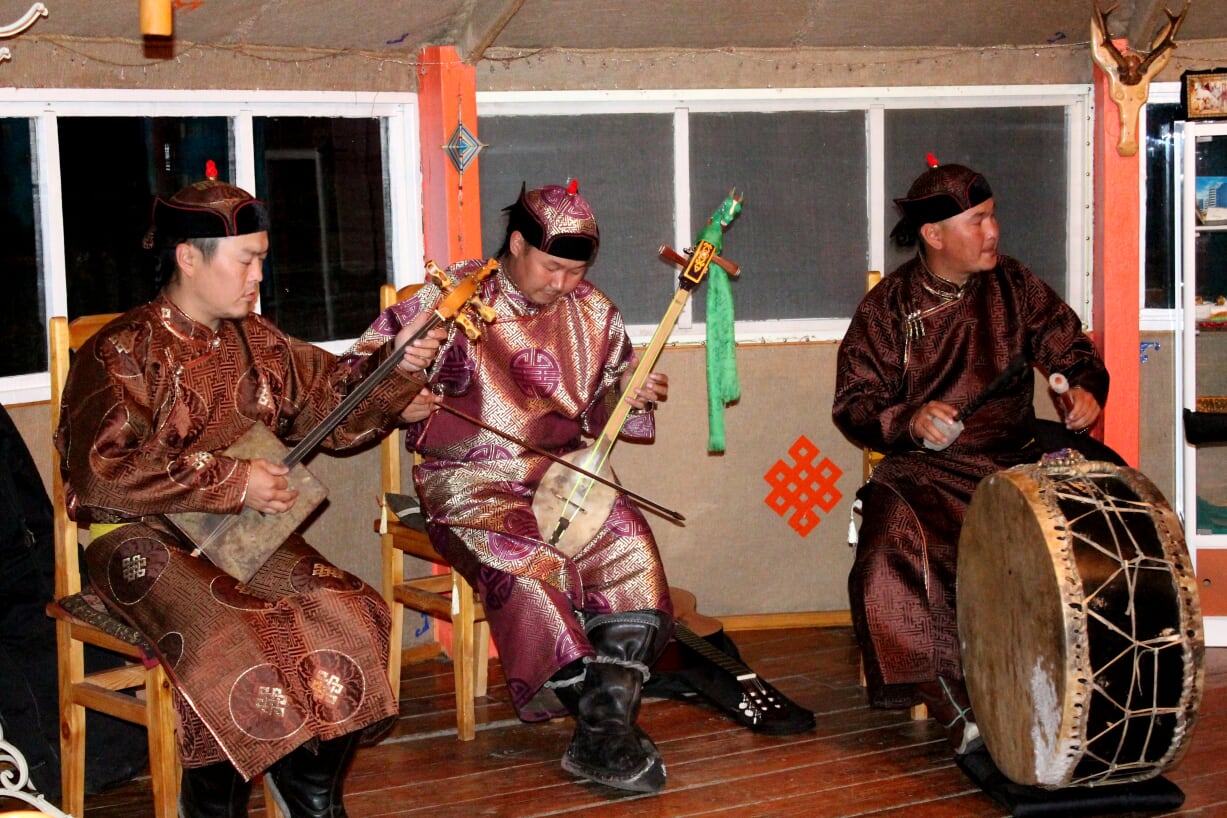
At the Bii-Khem Yurta (Ger) Camp located not far from Kyzyl city you have a chance to join the performance with the traditional Khoomei throat singing at the authntic atmosphere. The throat singing — a fantastical capability of the Tuva people (and some other Siberian nationalities) to emit simultaneously two or three sounds of different tone and to sustain the same sound for 25-30 seconds without taking a breath. If you close your eyes it is hard to believe that the sounds are emitted by a person and not by a musical instrument.
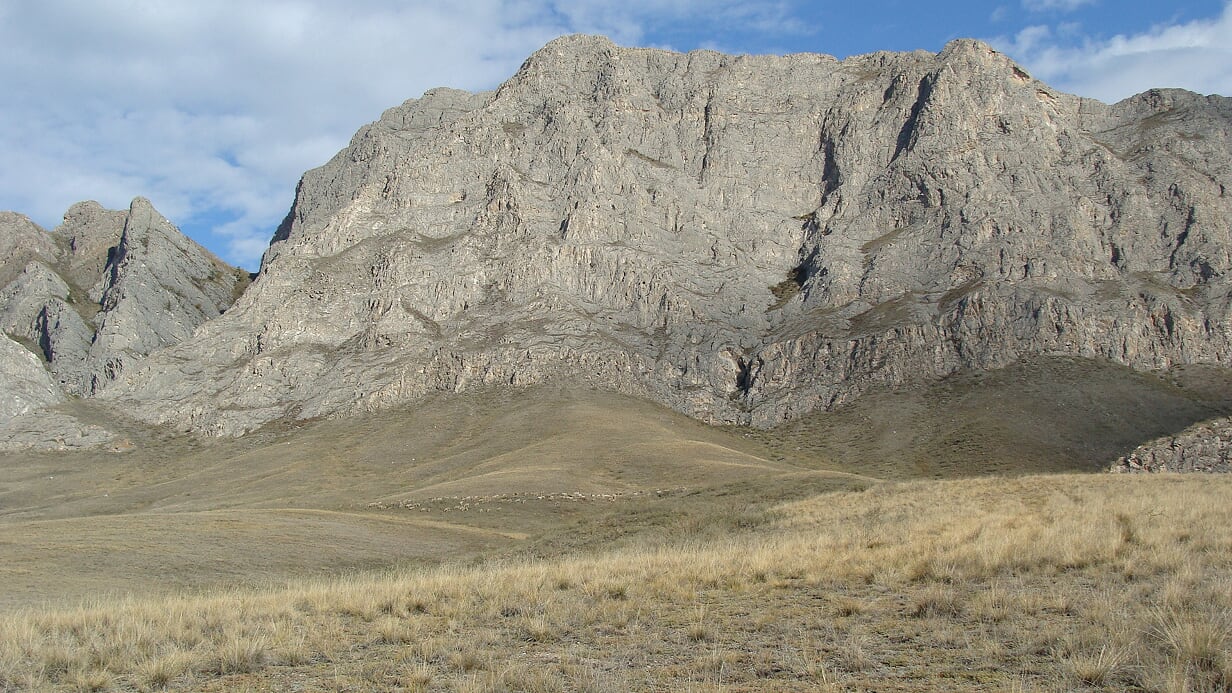
Mauntain Khairykan is one of the most respected places in Tuva, sacral for Buddhists and shamanists. In 1992 it was chosen by Dalai Lama XIV to be an energetically powerful place and Buddhist stella was erected here. Once a year local shamans come here to get energy, strengthen and purify their spirits. Around the larches a lot of edelweiss’s are growing, which became a symbol of the mountains for many people. Visiting of the Mauntain Khairykan is included to the programme of multi-day fixed date tours through the Sayan Mountains region.

Ruined temple Ustuu-Khuree is one of the the centers of Buddhist culture The temple was the crowning of Buddhist construction in Tuva. It was unique not only in Tuva but also in like the former Soviet Union. In 1930, after the adoption of a special resolution Ustuu-Khuree was closed and in 1937 — destroyed. In 1999 the Russian government, recognizing the historic and architectural value of the unique temple of Ustuu-Khuree, decided to restore it. In July 2012 during the open-air music festival taking place every year there the new temple Ustuu-Khuree was officially re-opened. Visiting of the Ustuu-Khuree is included to the programme of multi-day fixed date tours through the Sayan Mountains region.

Visiting of the Kazanovka National Museum of Khakassia will let you know more about the inheritance of ancient civilizations. This museum is situated under the open sky and includes mountains, canyons, caves, mixed forest, rare plants. There are more than 2000 archaeological monuments on the territory of the nature reserve. Every year archaeologists open 30-40 new monuments. The main purpose of this museum is to preserve natural and historical landscapes, reconstruction and development of local people’s life, gathering, searching, forming and protection of the funds. In the Kazanovka you will have a chance to see rock paintings which are 3000-5000 years old. Archaeologists make copies of these paintings on paper for further studying and you can take these copies with you as souvenirs. Visiting of the Kazanovka National Museum of Khakassia is included to the programme of multi-day fixed date tours through the Sayan Mountains region.
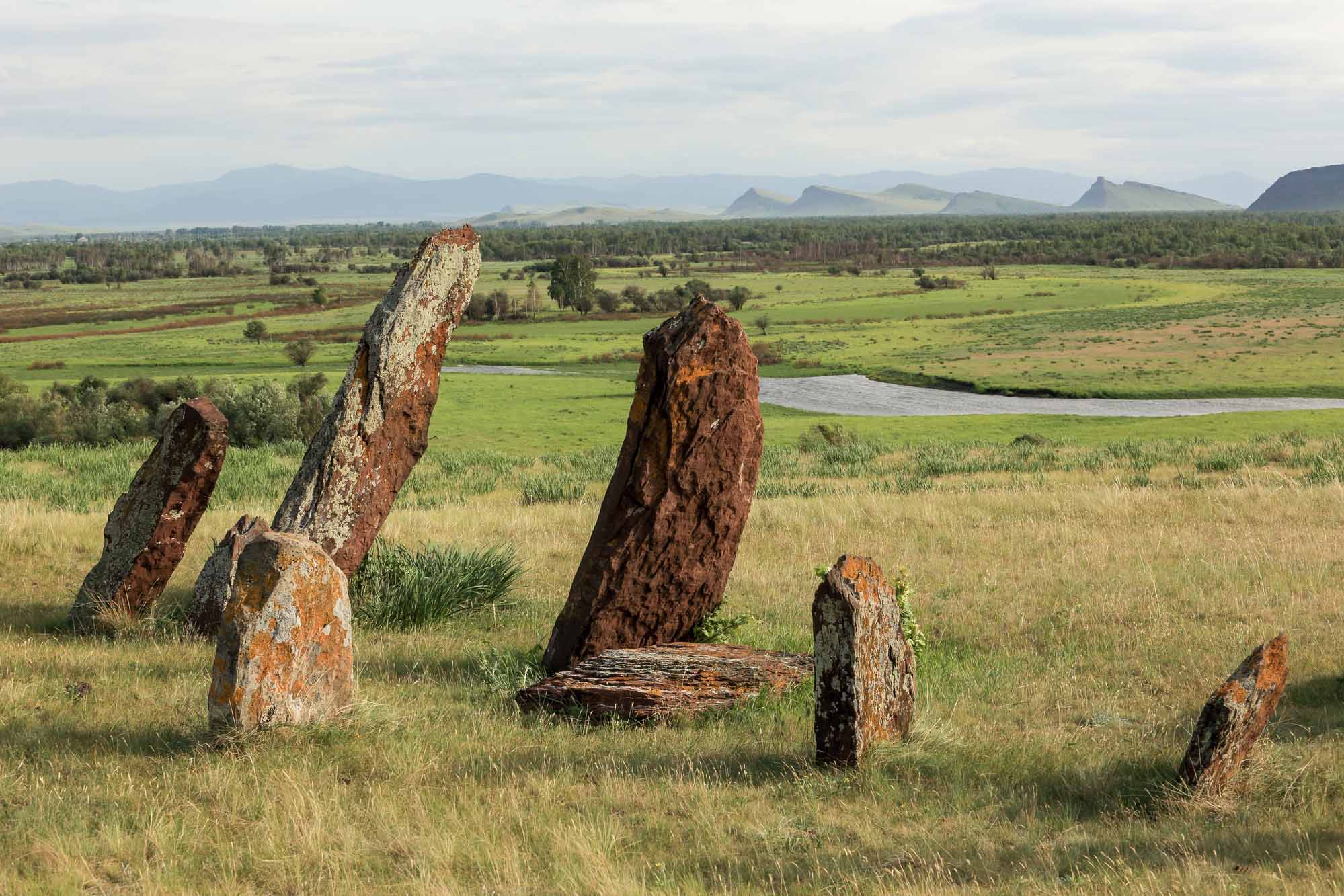
The famous Valley of Kings located not far from Abakan (75 km) might be put in one row with famous Stonehenge. There are 30 burial hills in this valley that date back to III-IV cc. B.C.. The largest monument of so called Tagar culture of the Bronze Age is the Big Salbyk Hill. The first description of the Big Salbyk Hill was made by Gerhard Friedrich Müller in 1739. In 1950s the hill was completely excavated. Since 1990s State Hermitage (St. Petersburg) arrange complex archaeological research of the Big Salbyk Hill and the Valley of Kings. The Big Salbyk Hill is burial place of one of Dingling kings and his family. The hill’s circumference is 500 m, its height is more than 11 m. The total weight of vertical stones is approximately 60 tons. Many think that this is a place where shamans enrich their power.
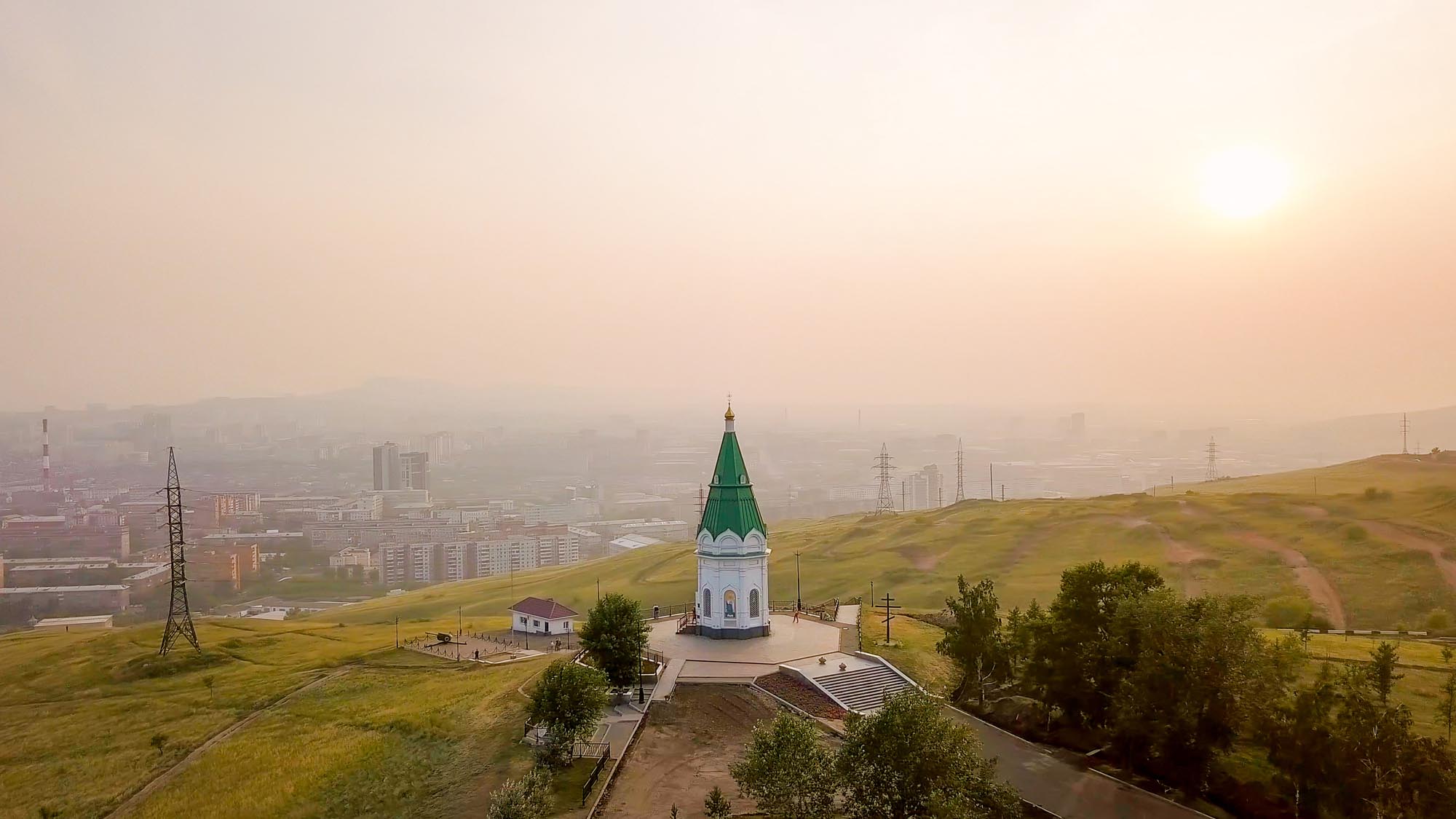
Krasnoyarsk is the most important industrial, cultural and scientific center of East Siberia, the largest port on the Yenisei River. The city was founded in 1628 by Russian explorers. In period of the Golden fever in Siberia in early XIX c. Krasnoyarsk became large merchant city. Now Krasnoyarsk is the top Eastern city in Russia with population more than million inhabitants. The most interesting places of Krasnoyarsk are: The Intercession Cathedral, mansions of local merchants, the Chapel of St. Paraskevi the Friday (XVIII c.) on the Karaulnaya (Guard) Hill, the Transsiberian Rail Road bridge (the Chapel and the Bridge are popular symbols of Krasnoyarsk imprinted on 10 rubles banknote of the Russian State Bank), architectural ensemble formed in 1980s at the arrow on place of the Yenisei River and the Kacha River confluence.
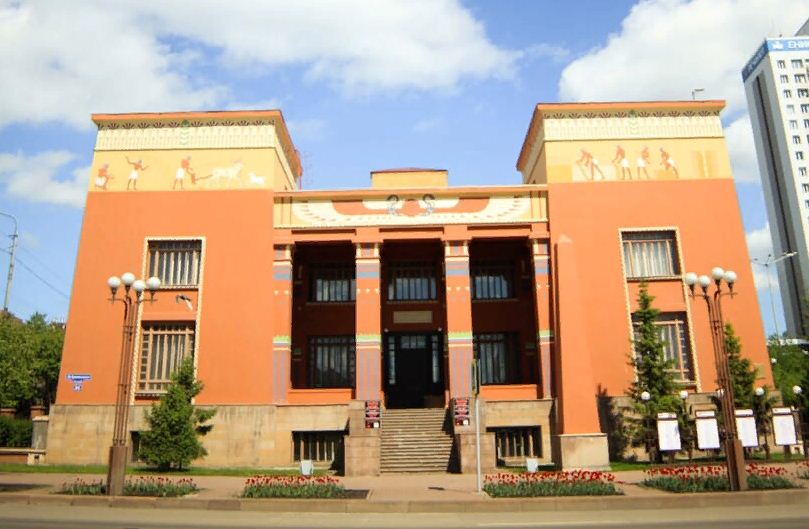
The Krasnoyarsk Regional Museum was establisher in 1889. In 1930 the museum was moved into new Modern style building specially designed for museum in 1912 but not built completely because of WW I and Civil War in Russia. Now the Krasnoyarsk Regional Museum is considered to be among the best historical and ethnographic museums in Siberia. Numerous hall of the museum house rich collection of archaeological and ethnographic items presenting nature and history of East Siberia.
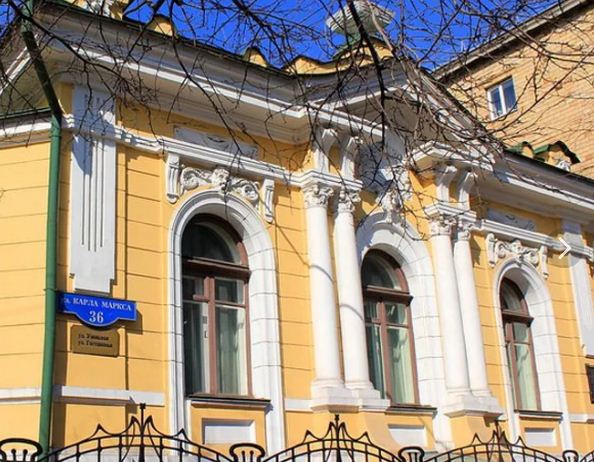
The items exhibited at the Surikov Art Museum in Krasnoyarsk present Russian paintings, graphics, sculptures and samples of decorative arts and crafts. The museum is located in house where Vassily Surikov was born. From here he leaved for St. Petersburg to enter to the Art School (1868) and here he had been repeatedly later when he became a famous painter. This house always was the most expensive place on earth for Vassily Surkov where he wanted to settle and live permanently. Here he painted one of his last paintings, terrible mystic prophecy of the the nearest future events – the Storm of Snow Fortress (1891). Now the museum possesses the unique collection of the great Russian artist of the XIX-XX cc. paintings.
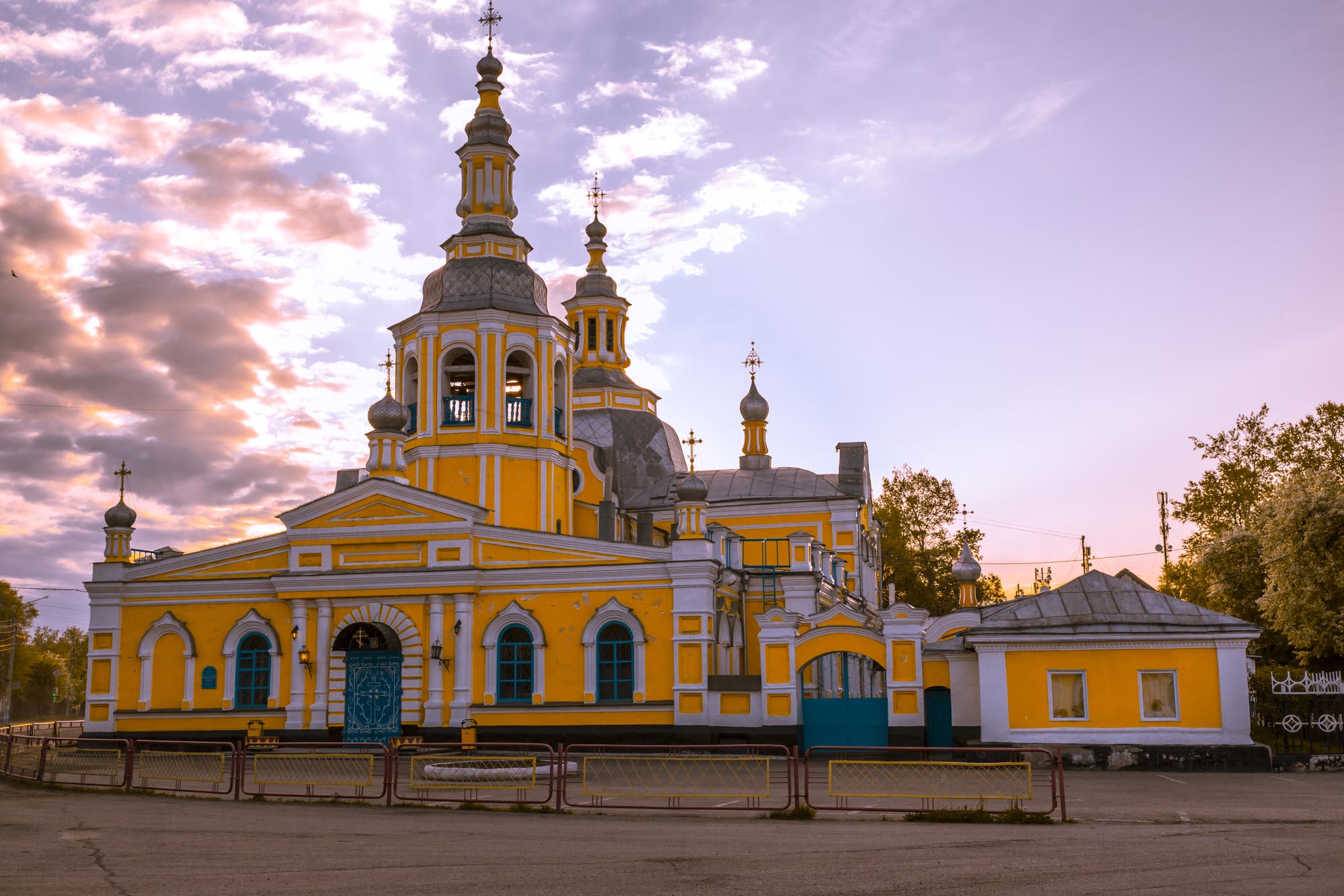
An ancient Russian town Minusinsk founded in 1739 is located at the place of the Minusa River flowing into the navigable arm of the Yenisei River. During the city sightseeing you will see the Our Saviour Cathedral, walk around the city center with aged merchant’s houses, visit a local market where you can buy famous Minussinsk tomatoes – gigantic crimson tomatoes known since the end of the XIX c.. Many local residents still use seed varieties, which fell to them by inheritance from grandparents. The largest tomato weighing nearly 2 kg was raised by local citizen in 2010. Minusinsk Museum of Local Lore founded in 1878 by local enthusiast, pharmaceutist Nicolay Martyanov presents a lot of interesting archaeological, ethnographic and natural items. Among them you can see unique collection of stellas with the Orkhon (Old Turkic runic alphabet) inscriptions of the VII—XIII cc.. Visiting of Minusinsk town is included to the programme of multi-day fixed date tours through the Sayan Mountains region.

The Yenisei Pillars is the State Natural Reserve situated near Krasnoyarsk city on the right bank of the Yenisei River. State Reserve is well known for its unique natural granite structure which rise up to 100 m. The Yenisei Pillars tour is offered for clients who like peace of mind, who likes to discover new places and picturesque views, who is trying to find unity with Nature. Right here you will get the most vivid impressions of the Krasnoyarsk city. This is absolutely impossible to do not visit the Yenisei Pillars staying in Krasnoyarsk. In contrast to the usual trips to the nature reserves you do not have to spend time and energy to reach the 1st Pillar on foot (7 km). Our vehicles will take you directly to the top of the Yenisei Pillars.
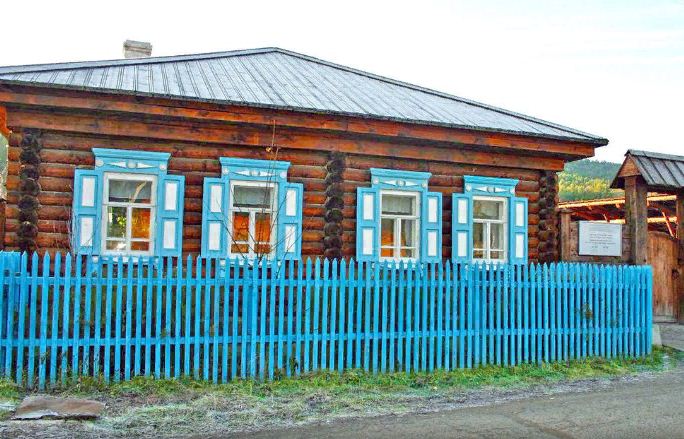
Ovsyanka village is place where the great Russian writer of the XX c. Victor Astafyev (1924-2001), one of the largest representatives of so called Village Prose (movement in Soviet literature in periods of the Khrushchev Thaw and the Time of Stagnation trying to oppose natural collectivist values of Russian village and urban individualism) was born. You will see grandmother’s house where Victor Astafyev spent his childhood and the house where he lived and worked in 1980-2001. En route you will stop at the Krasnoyarsk Hydroelectric Power Plant, one of the hugest in the world and at the panoramic platform devoted to the central work of Victor Astafyev – novel Tsar Fish (1976).

Kyzyl, the capital of Tyva (Tuva) Republic is located in the middle of the Tuva Depression in the mountains of South Siberia. The town of Kyzyl (originally Belotsarsk) was founded just after establishment of Russian protectorate over Tuva (1914). After the victory of the Reds over the Whites in the Civil War in Russia (1918-1920) Belotsarsk (White Tsar’s Town) was renamed into Kyzyl (the Red Town). In 1921-1944 nominally independent Tuvan People’s Republic existed (acknowledged by the USSR and its satellite Mongolian People’s Republic only). Now Tuva is a republic in structure of Russian Federation. During Kyzyl city sightseeing tour you will visit the most interesting places of the Tyva (Tuva) Republic capital: Buddhist temple, shaman’s clinic, prayerful Desires Drum made in Nepal, souvenir shop.
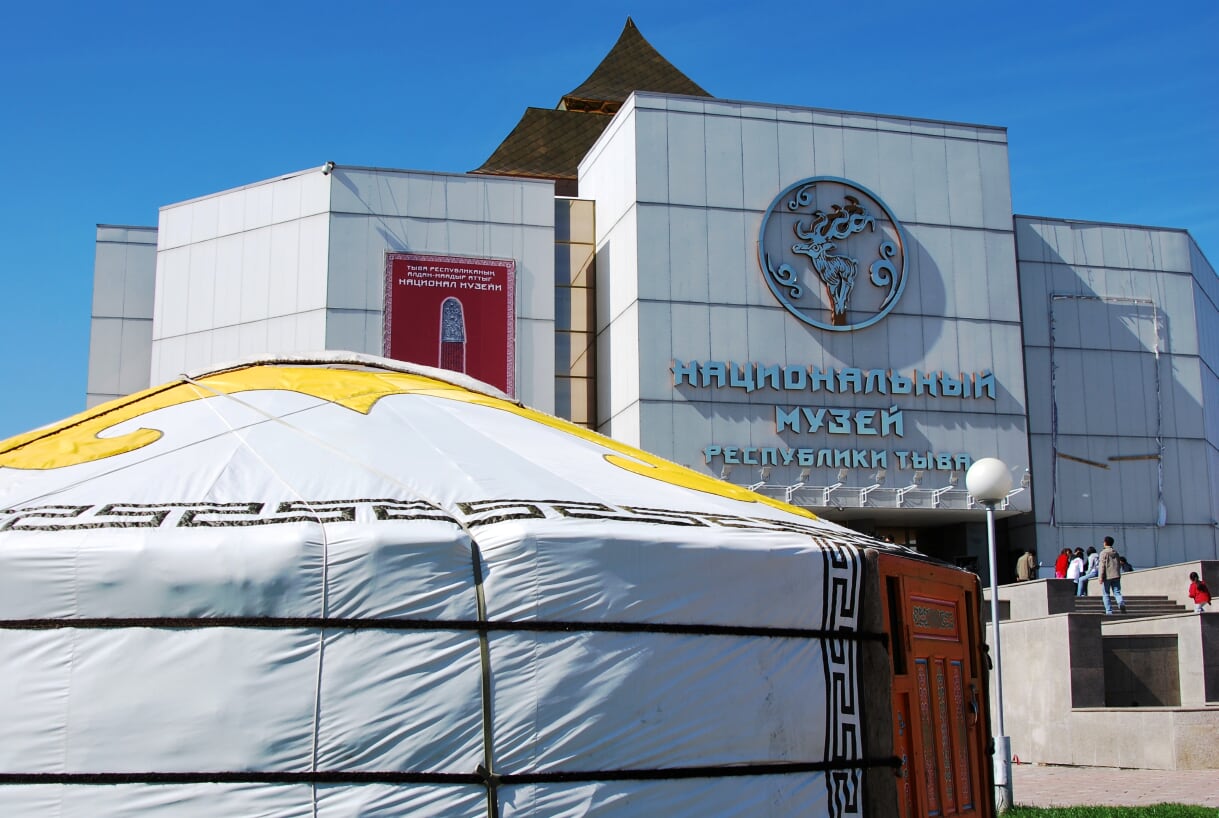
Pearl of the National Museum of Tyva in Kyzyl collection is the famous exposition of Scythian Gold found in 2002-2003 by specialists of the State Hermitage Museum (St. Petersburg) and the German Archaeological Institute (Berlin) in the excavations of the Arzhan II Scythian mound (VI c. B.C.) located nor far from Kyzyl city. These archaeological finds (over 20 kg of gold products) caused a sensation in the world archeology.
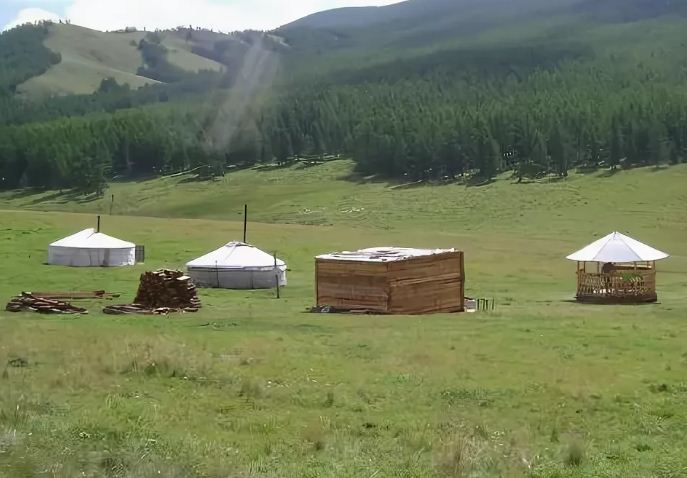
The Sai-Khonash Yurta (Ger) Camp located in Tyva provides you with accommodation in yurts for 2-3 persons. The camp is located in a very beautiful place, surrounded by mountains. There are many nomads camps nearby. Conditions are close to the real Tuvan yurtas. Please note that the yurta camp offers visitors a minimum comfort: a wooden toilet and washing facilities are located outside yurts, there is no summer shower, but there is a Russian wooden banya, also a kitchen in a separate yurt. The yurt camp is an excellent opportunity to get acquainted with the real life of the Tuvan nomads. All activities there carry the cognitive character. You will find daily lives of original nomads; learn how to cook their daily main dishes: lamb meat, cheese, vodka araka. Master classes on cooking Tuvan cheese, on butchering sheep and cooking of the local milk vodka Araka will be held. You will have an opportunity to take part in guided horse riding around the neighbourhood, into the forest, to the mineral springs arzhaans, to nomads camps, uphill with snack on the way. Stopover at the Sai-Khonash Ger camp is often included to the programme of multi-day Tyva tours.
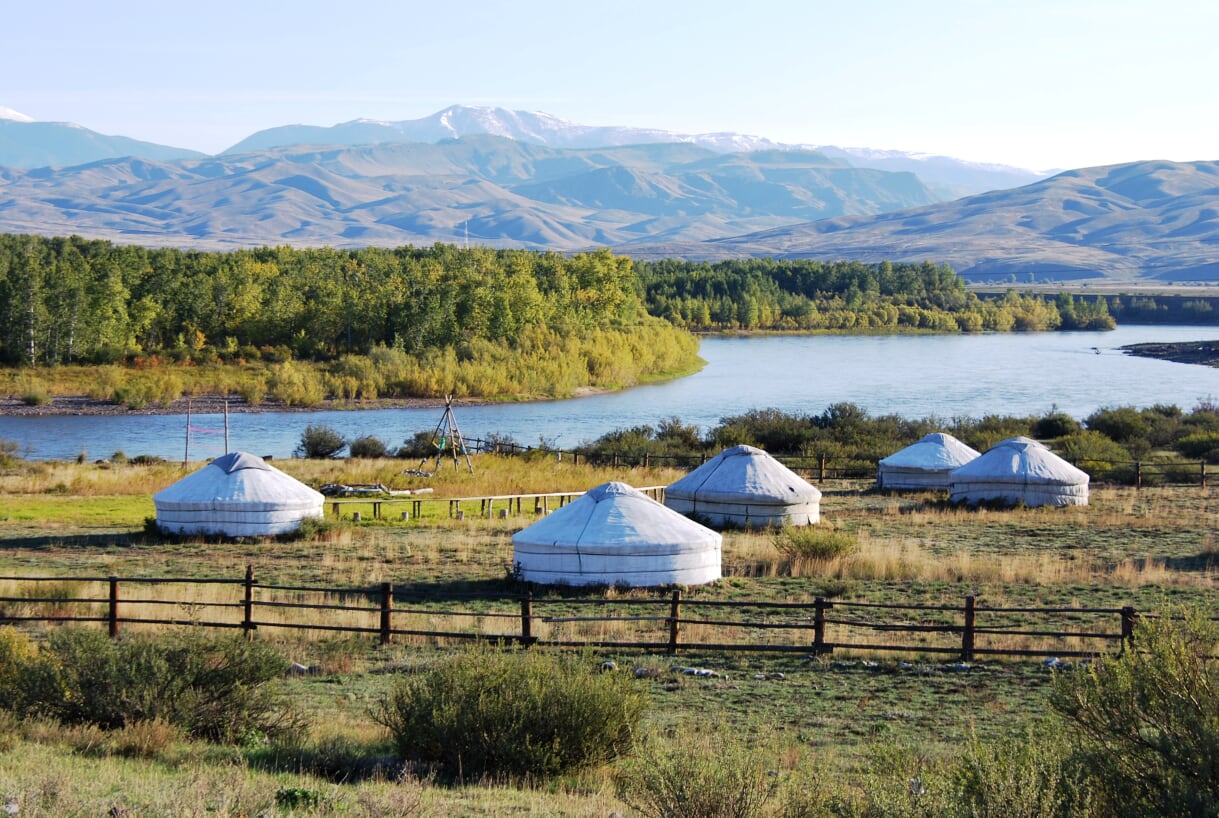
You have a chance to taste original Tuvan nomad’s national cuisine and to take pleasure in fantastic nature of the Bii-Khem River valley at the yurta (ger) camp located not far from Kyzyl (22 km). Stay at original felt yurtas (traditional nomad’s conical huts) designed specially for tourists is offered. Accordingly to traditions of nomads yurta is divided for male and female parts. Dining yurta and fireplace are located on the bank of river. Before your lunch or dinner you have a chance to walk at the picturesque environs and to ascent to the nearest hill with fantastic Bii-Khem River valley view. At the ger camp located not far from Kyzyl city you have a chance to join the performance with the traditional Khoomei throat singing at the authntic atmosphere. The throat singing — a fantastical capability of the Tuva people (and some other Siberian nationalities) to emit simultaneously two or three sounds of different tone and to sustain the same sound for 25-30 seconds without taking a breath. If you close your eyes it is hard to believe that the sounds are emitted by a person and not by a musical instrument. During the traditional Tuvan tea ceremony you will hear legends and parables about tea, a story about methods of making and brewing Tuvinian national tea with milk and salt, you will learn the history of tea in Tuva. To make the lives of our guests as bright as white milk, to make the spirits of skies and ground assist you every day, we invite you to attend Tuvinian tea ceremony. Along with this tea you will taste the rich culture of Tuvinian people, you will see amazing land of steppes of Tuva. You have also an opportunity to watch original shaman’s rites at the authentic atmosphere here. Stopover at the Bii-Khem Ger camp is often included to the programme of multi-day Tyva tours.
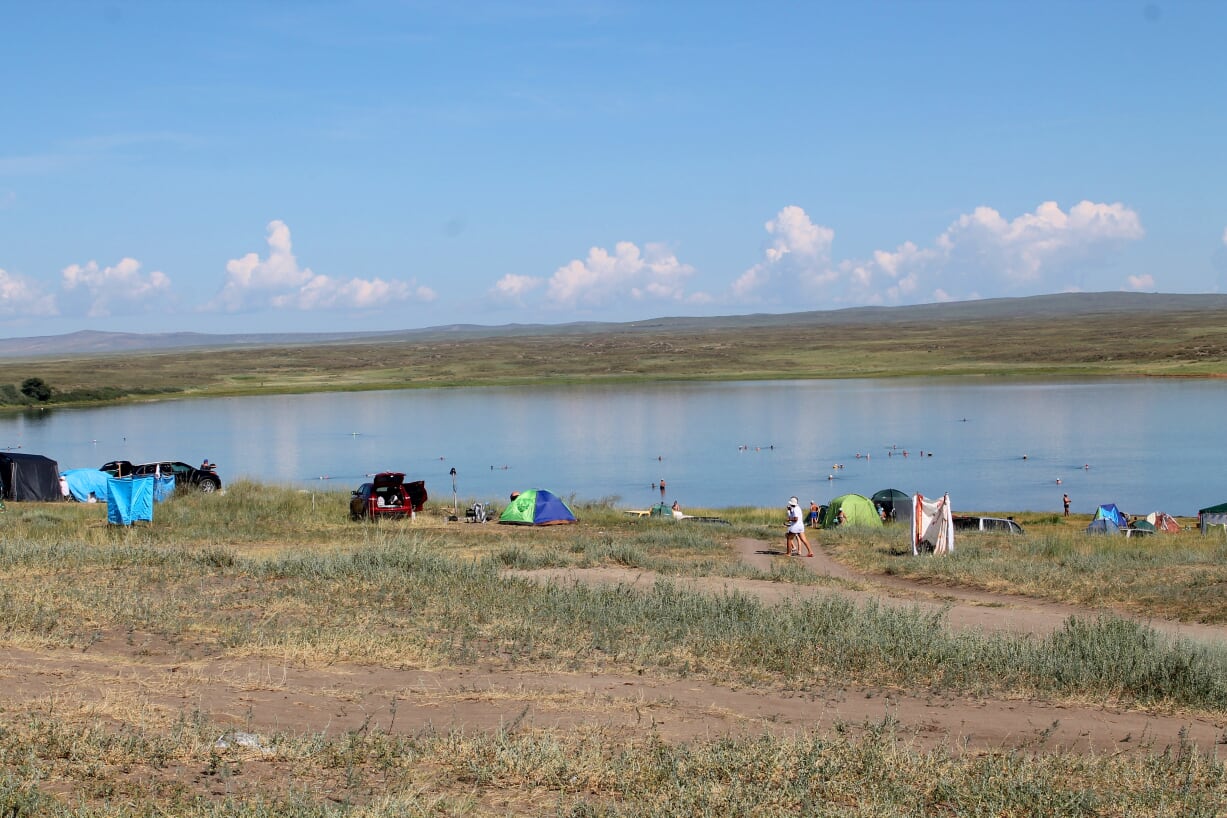
The salt Lake Svatikovo (Dus-Khol) is known as therapeutic. Swimming and mud bathing at the lake is kindly recommended. Each tourist could tell that healing properties of the lake is higher than ones of the Dead Sea in Israel. Mineralization of water in Dus-Khol is very high, up to 280 g / liter. With the help of mud some diseases of the joints, digestive apparatus, of peripheral and central nervous system, also skin and gynecological diseases can be cured. Visiting of the Lake Svatikovo (Dus-Khol) during the stopover at the Bii-Khem Ger Camp is included to the programme of multi-day fixed date tours through the Sayan Mountains region.
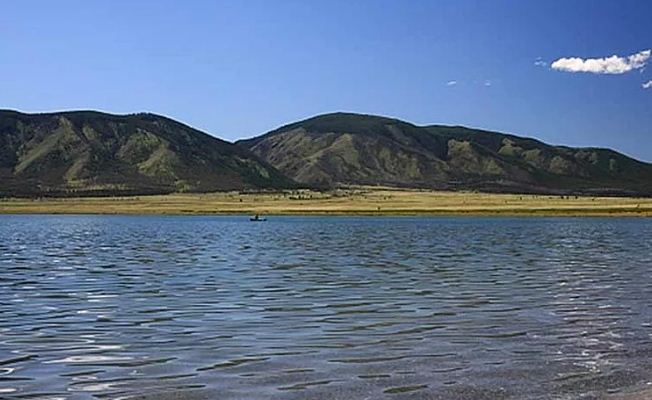
The fresh Chagytai Lake located not far from the salt Lake Svatikovo (Dus-Khol) is one of the deepest and biggest lakes with fresh water in the Tuvinian Basin. Its crystal water swashes at the foot of the northern slope of the mountain range Tannu-Oola. It’s 1003 meters above sea level. Its area is about 2860 hectares. The banks of the lake either rocky or sandy stretch 20 km long. Only the southern part of the lake is marshy and is covered with purple willow, birch, larch. Visiting of the Lake Svatikovo (Dus-Khol) during the stopover at the Bii-Khem Ger Camp is included to the programme of multi-day fixed date tours through the Sayan Mountains region.
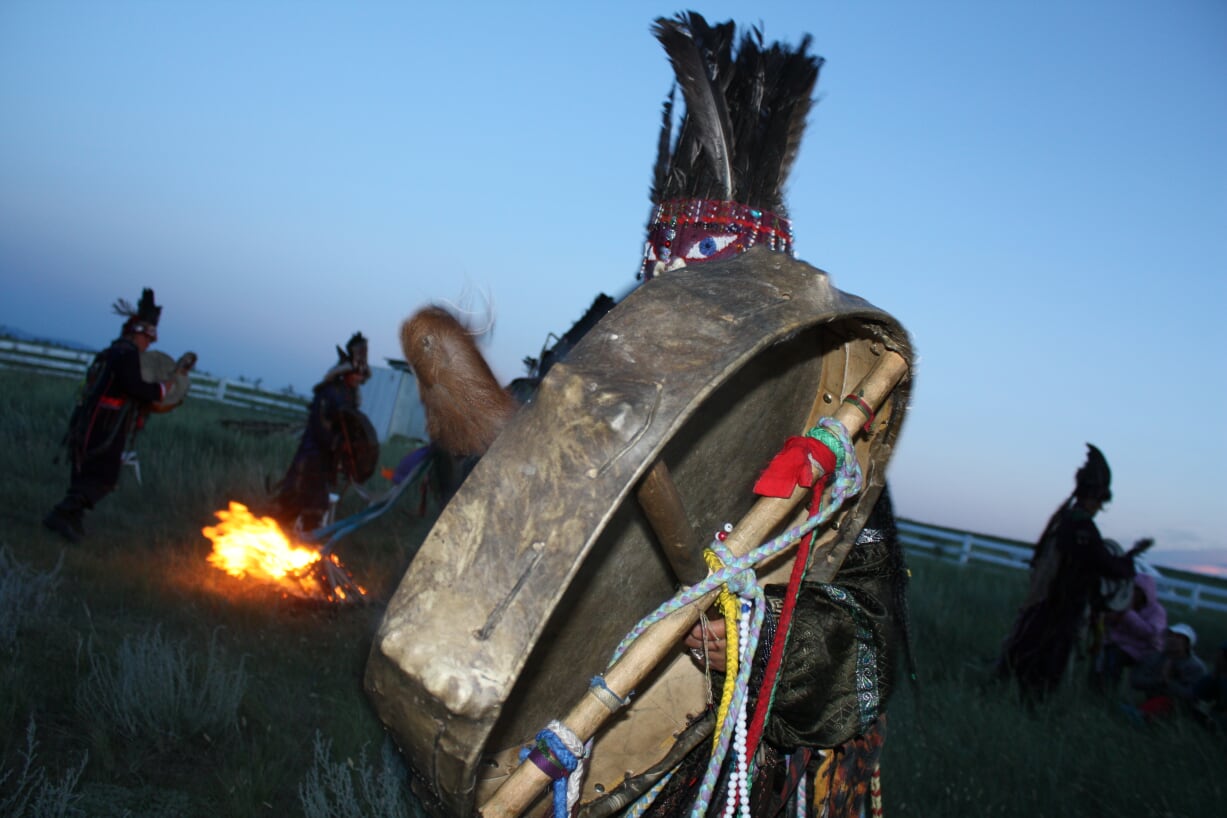
Shaman’s mystic rite is a magical communication between shamans and spirits. During this ritual the shamans dance around fire, sing and beat a drum. You can watch original shaman’s rites at the authentic atmosphere at the Bii-Khem Ger Camp. There the shamans will tell you about their traditions, rituals and abilities. Stopover at the Bii-Khem Ger camp is often included to the programme of multi-day Tyva tours.